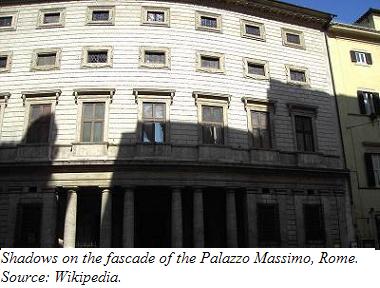 Thomas Kiernan, the Irish Minister to the Holy See, had a beautiful 19-year-old daughter, Blon, who had of course known O’Flaherty forever. O’Flaherty arranged for her to have a standing invitation to tea at the German embassy. She would return from the tea parties and report to O’Flaherty all the small talk made by the German officials. O’Flaherty would pass this on to Derry, who had four secret radio operators in contact with British Intelligence. O’Flaherty’s association in this led to the priest being called in and severely dressed down by his superiors—not that it had much effect.
Thomas Kiernan, the Irish Minister to the Holy See, had a beautiful 19-year-old daughter, Blon, who had of course known O’Flaherty forever. O’Flaherty arranged for her to have a standing invitation to tea at the German embassy. She would return from the tea parties and report to O’Flaherty all the small talk made by the German officials. O’Flaherty would pass this on to Derry, who had four secret radio operators in contact with British Intelligence. O’Flaherty’s association in this led to the priest being called in and severely dressed down by his superiors—not that it had much effect. Dabbling in intelligence may have caused O’Flaherty trouble otherwise, too. In 2000, documents surfaced showing that the Nazis had gotten information from inside the Vatican. O’Flaherty was named as the source of one report. Since the report was inaccurate—it warned that the Allies were planning to invade north of Rome, instead of to the south, as they actually did—it’s possible O’Flaherty was trying to mislead the Germans. Then, too, the organization got involved with at least two known double agents, and as American intelligence reports later revealed, the Gestapo had agents inside the Vatican itself; so it’s also possible that O’Flaherty didn’t know what he was doing.
O’Flaherty’s colleagues had every reason to be cautious and distrustful. But sometimes the Monsignor’s open-hearted acceptance of every person proved to be wiser. The German soldier who was brought to the Irish Legation one day certainly looked suspicious. The Italian who accompanied him claimed that the soldier had collapsed with exhaustion in the street. When the Italian had stopped to assist him, the soldier explained that he’d gone without food for several days. He was a priest, he said, and was fasting in the hopes that God would give him the opportunity to celebrate Mass.
Delia Murphy must have had her reservations, but she took the German to O’Flaherty. The Monsignor quizzed the man about the faith, and, satisfied that his claim was genuine, took him to a chapel. “As I watched him slowly mount the steps to God’s altar,” Delia wrote later, “I wondered about the foolishness of war and the sacrifices of life.”